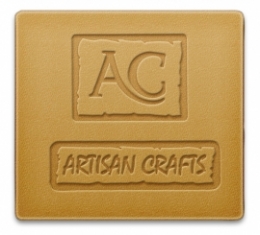
Here's a selection of books I've repaired to give you an idea of what can be achieved.
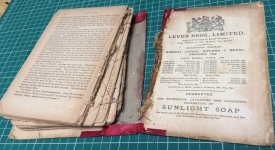
Wilson's Tales from the Borders
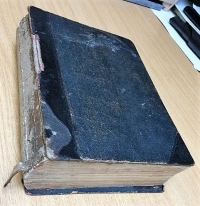
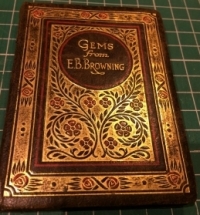
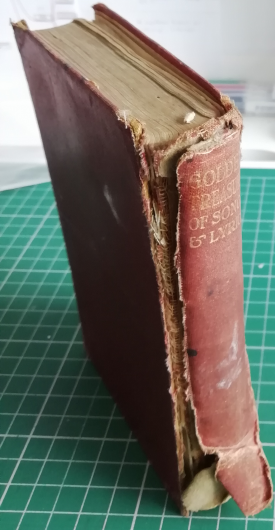
Poetical Works of James Thomson
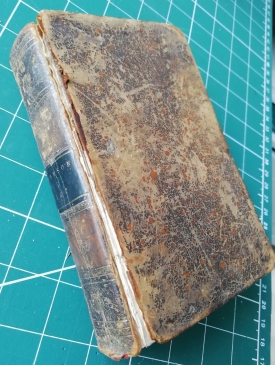
The Cruise of the Land Yacht "Wanderer"
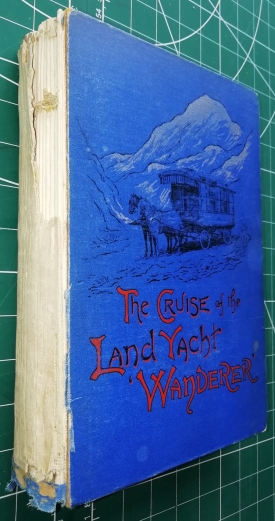
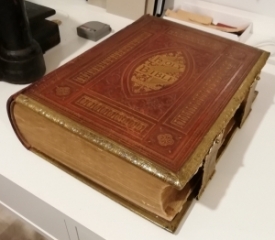
The Necklace of Princess Fiorimonde & other stories
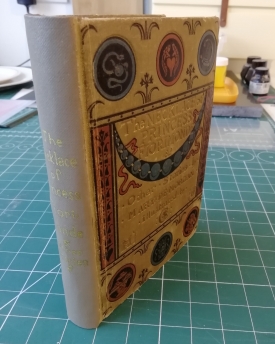
Gems of Elizabeth Barrett Browning
This book belonged to my clients' mother - given to her for achievements at school. It is a treasured possession and has been relatively well looked after, but is now displaying signs of wear and tear through usage. The commission was to repair the book in order to prevent further damage, in order to keep it useable, rather than a full restoration. The owner wished to retain the well-used appearance, but make it resilient enough to be used by her family.
Damage Assessment
The book was in reasonable condition considering its age (~1910) – just some minor damage through use.
The body text spine was mostly intact, with insufficient damage to stitching to warrant redoing if the casing was reattached.
The end papers themselves were intact, but the supporting pages were made of lighter weight paper and hence almost completely detached from first signature.
The case spine was partially separated from body text spine, which would deteriorate further on each use if not addressed.
The leather binding was worn & scratched, with some drying & stretching evident on spine plus a fair amount of scuffing on rear cover & to edges.
There is minor evidence of foxing to some pages, but not sufficient to warrant repair.

Repair Process
The frontispiece is printed on heavier paper and glued onto the damaged pages in the first signature, so this needed to be removed in order to repair the torn pages.
Gently soaking them to dissolve the original paste was not an option due to the weight of the paper and my concern that the printed image may bleed, so I opted for gently steaming the reverse side to soften the paste and peel off. This worked well.
The first damaged page of the signature was also pasted to the end-paper, so this too was steamed off.
With these pages removed the spine was repasted to attach back to the leather spine casing. In order to ensure the case remained square, it was necessary to clamp it in position whilst drying. This also ensured the case hinge remained tight.


The next task was to repair the torn paper hinge so that it could support the frontispiece being glued back in place. 7 gsm Japanese Kozo paper was used to achieve this. Normally one would match the Kozo as close as possible to the colour of the original page, but the adjacent pages were different, so I opted to match the paper of the body text, rather than the frontispiece.


This is where I discovered a small error in the original binding – the paper on the right-hand side in the picture was printed with the grain in the wrong direction, causing it to cockle when the paste was applied (this didn’t happen in the left-hand side). I dampened it very slightly then left in the press over night which removed most of the cockling.
I was tempted to realign the page next to it which wasn’t centred, but rather I left it alone as that is part of the charm of hand-made books.

The final stage was to renovate the leather cover.
This was done using Carnauba cream which moisturises the leather, giving a soft sheen finish without affecting the original colour.


Further Information
This edition was most likely printed around 1910.
It is a gem of a book (pun intended), but only of sentimental rather than commercial value. I found a number of similar copies on Abebooks.com (I’ve yet to not find an edition of a book there, regardless of how obscure). There were I think 9 listed, ranging from $5 to $20.
Brian Pollitt Artisan Crafts November 2018




